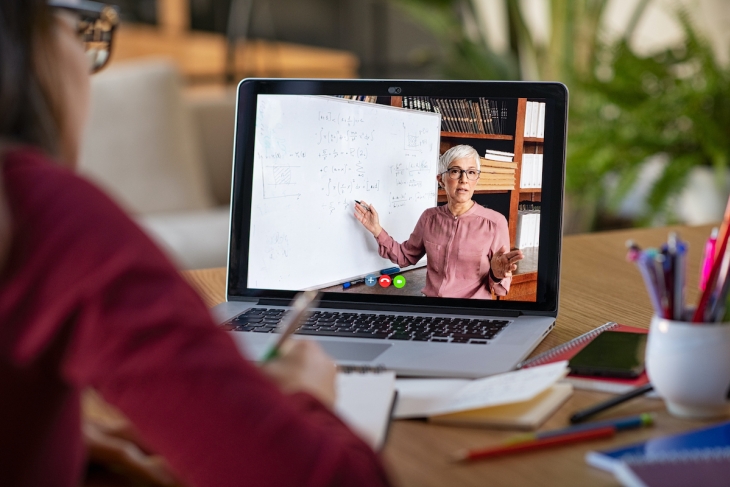The sudden shift to remote learning this spring demanded that schools innovate and adapt with incredible speed. The entire education world is trying to serve millions of suddenly home-bound students, and there’s simply no precedent for a challenge on that scale.
But with schools shuttered and no clear timeline for getting students back into the classroom full time, we can’t sit back and wait for a return to normal. Teachers across the country are navigating this moment with creativity and a deep belief in what students can still achieve. I want to share a little of what we at the College Board have learned from the Advanced Placement community these past eight weeks, especially those teachers who produced live classes over YouTube for thousands of students. Like all of us, they were learning on the fly and figuring out how to keep students engaged online.
These teachers taught us that they need:
- Better tech. Now that teachers are running online classes from home, they need better gear. Policymakers have been focused on hardware for students, but we need major investments in tech for teachers. We sent teachers a high-res camera, a document cam, and headphones with broadcast-quality audio. It made their lives a lot easier—and removed the variability of stock video and audio options embedded across teachers’ personal devices.
- Online course material. AP teachers had a big advantage jumping online because of AP Classroom, online course materials designed with extensive input and testing by teachers. Course guides, progress checks, and practice questions were already online, making the transition easier. Districts need to make sure that their content-management systems are ready for much more blended and online learning and that teachers have a say in designing them.
- Professional development in blended learning. Online teaching is a different beast from classroom teaching, as we heard repeatedly from AP teachers. They pulled out all the stops to keep things fun and engaging, from quirky Zoom backgrounds, to live-tweeted questions, to celebrity guests. It’ll take time, training, and regular feedback to figure out what actually works for ensuring student learning in the longer term. Places that already have expertise—virtual schools, rural high schools already using remote instruction, even community colleges—should share freely.
- Flexibility about roles and workloads. The teaching profession is going to look different for the foreseeable future. “The COVID-19 crisis is forcing all of us to revisit how we understand and therefore configure teachers’ roles,” according to a joint report from Chiefs for Change and the Johns Hopkins School of Education. Some teachers may excel at online lectures; others may prove especially good at one-on-one mentoring over video chats or phone calls; others might create great online practice materials. Especially given the health and safety concerns some teachers may have about returning to classrooms, school leaders need flexibility in redeploying their teams.
- Help with student motivation. A wealth of research shows that online education demands more discipline from students. Without in-person accountability, individual motivation matters even more. Advanced Placement has a clear incentive in the form of a test that can earn students college credit. Schools should think hard about how to create clear, meaningful incentives for students learning online—guideposts to keep them on track.
- Grace all around. Both students and teachers are trying a lot of new things right now, and not all of them are going to work perfectly. Like all of us, teachers struggled with severe weather conditions that knocked out their internet, less than flattering camera angles, kids at home, and the pesky mute button. But in just eight intense weeks, many went from never having used Zoom to multifaceted pros.
At the bottom of College Board’s regular AP student surveys, we do something any classroom teacher knows is dangerous: We hand an open mic to teenagers. “Is there anything else you’d like to tell us that hasn’t been captured in this survey?” Students get a blank text box and all the time they want.
Some of what we get back is funny (“What is love baby don’t hurt me don’t hurt me no more” —Florida, class of 2019), some is anxious (“Please tell us if there have ever been issues with erasable pen!” —Arizona, class of 2019), and much is unprintable in a family-friendly education blog.
But one of the most common things we hear is earnest praise for teachers, for the people who inspired, cajoled, and guided students through the year. As @LauraTelerski said on Twitter, “Big shout out to my daughter’s AP Chem teacher who is doing her class standing in her bathtub so she can use the wall of the shower as a dry erase board—and saying to the kids, ‘Don’t worry, we are going to figure this out together!’ “
Amen.
Editor’s note: This post, written by a member of the Thomas B. Fordham Institute's Board of Trustees, was first published by Education Week on its “Rick Hess Straight Up” blog.




